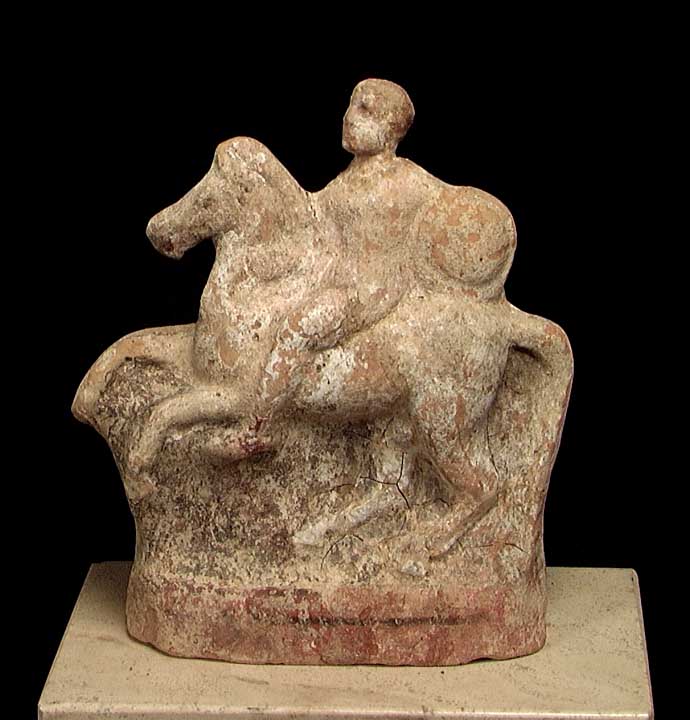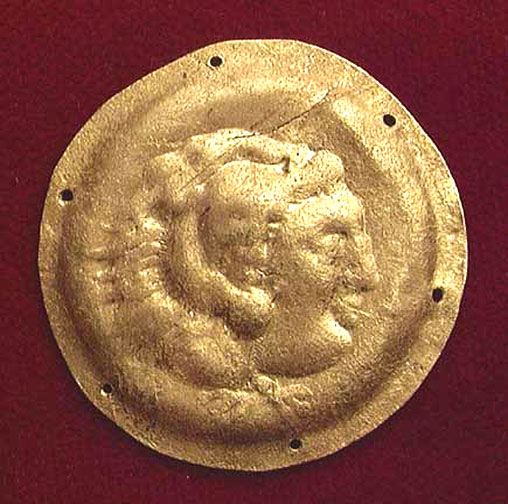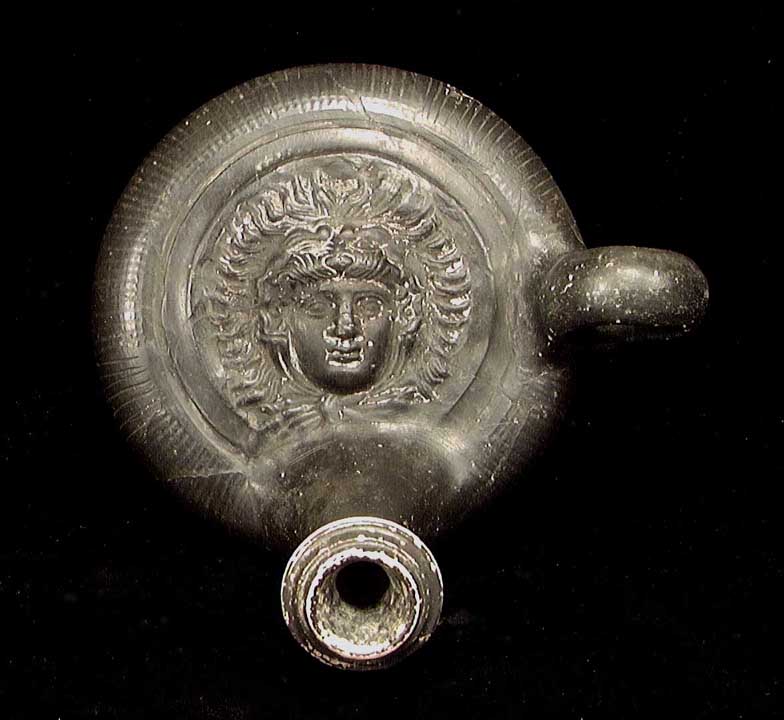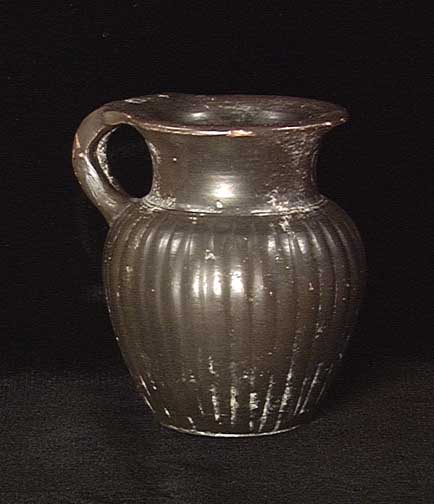
Alexander the Great. He sits on his rearing horse holding the reins in one hand and a Macedonian type shield in the other, the whole wonderfully composed and executed. 4.1 x 4.75 inches. Considerable remains of white, black and red pigment. Provenance: From the collection of an American diplomat stationed in Italy in the early part of the 20th century. On Italian marble base.

This one is interesting showing Alexander as pop-art or a good luck charm maybe. Or is it just Herakles?A GREEK GOLD APPLIQUE OF ALEXANDER THE GREAT AS YOUNG HERCULES. Hellenistic, c. 3rd-1st century BC. The sheet gold applique of circular form with the head of the young Herakles wearing his lion-skin helmet done in repousse technique, six small holes for attachment in the circumference. 24 mm diameter. Rare.

Interestingly is thisSUPERB CALENE WARE GUTTOS OIL LAMP FILLER, c. 3rd century BC. The black glazed terra cotta lamp filler with an exquisite molded facing head of Alexander The Great as the young Heracles wearing the skin of a heavily maned lion on his head, the paws tied beneath his chin. 4.75 x 5.25 inches. Professional repair with a few small patches, the relief head appears complete and original. A superb Hellenistic Greek head of the finest style, the huge flowing mane of the lion especially impressive in the manner in which it frames the strong but sensitive countenance of Alexander. Museum quality.

Price $1,850 or £1,400A FINE GREEK BLACK GLAZED OLPE, c. 4th century BC. The single handled cup of elegant form with fluted body and wide rim and double strap handle, the body with a fine black glaze. 3.4 inches. Nice example.
This is mine, 4th cent. BC from Magna Graecia (the cup was about the same price) which I bought a few years ago for £135! Inflation or extortion?

(The rings are Colin Farrell and Anthony Hopkins' props from the movie.)